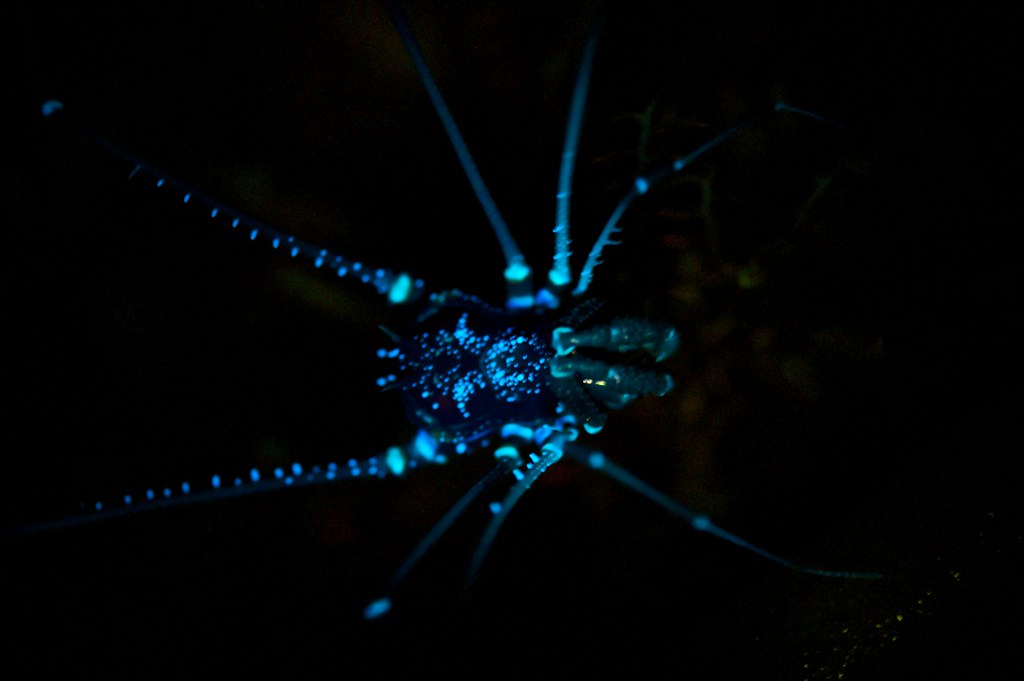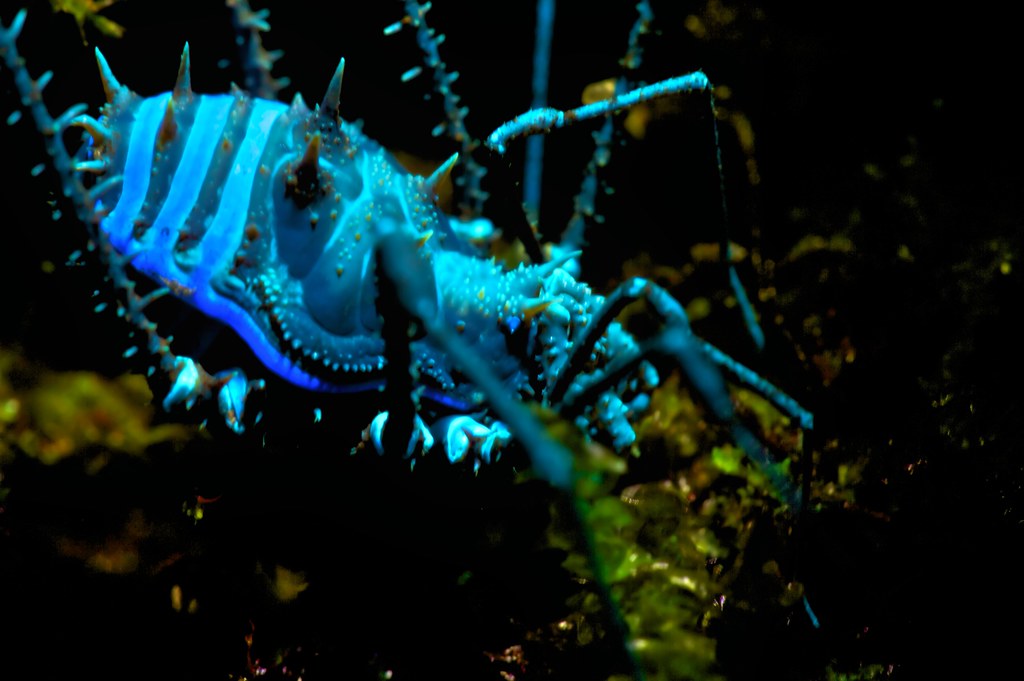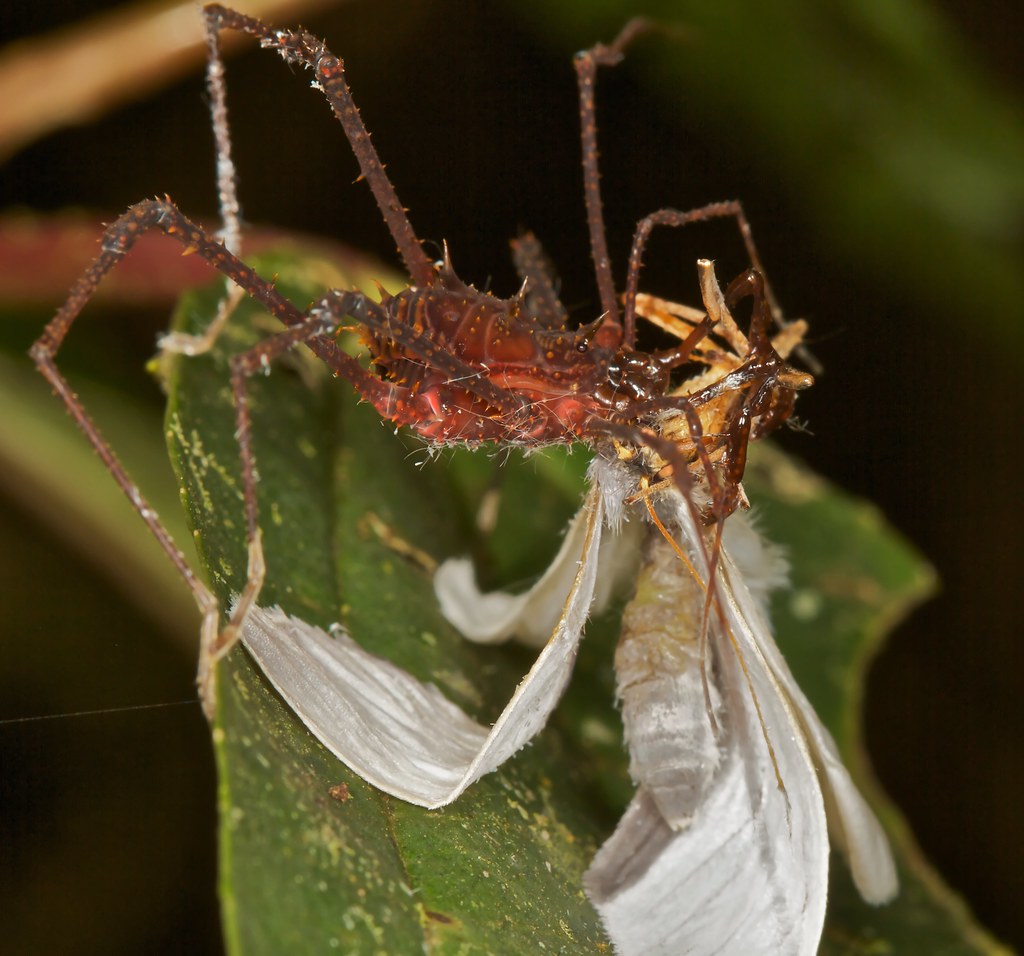pbertner
TPF Noob!
- Joined
- Sep 30, 2010
- Messages
- 12
- Reaction score
- 0
- Can others edit my Photos
- Photos NOT OK to edit
Yellow Gonyleptid? harvestman:


Reddish Gonyleptid? harvestman:

Same harvestman exposed to 365nm wavelength (UV) light:

Cosmetid harvestman with food:

UV fluorescent harvestmen:


Harvestman with moth:

Under UV:

I had already known that material in the chitin of scorpions fluoresced when exposed to UV light, however, thanks to Techuser on flckr for the idea of using UV on harvestmen. Here shows the use of a tripod using 15 and 30 second long exposures, while minimizing ISO's to 100-400. The results are much cleaner than previous attempts. Here, any movement will result in fairly poor results. UV light was in the 365nm wavelength. This provides a more naturalistic lighting that minimizes the purple colour cast of 400nm + wavelengths, though the latter definitely have an interesting look. Furthermore this wavelength seems to make create a brighter fluorescence, enabling shorter exposure times. The reason is a little unclear though. Some insects see in UV and so it might help in species differentiation or mate selection. Snakes, birds and other predators can also see in UV so perhaps the brightness reflects aposematism in nocturnal predators in a similar way to how bright colours in the visible spectrum do to diurnal predators.
Some other insects that I have found to reflect UV are some leaf mimicking katydids, centipedes (Scolopendra), some crab backed orbweavers (Micrathena sp.), some caterpillars, scorpions, some stick insects, some grasshoppers/katydids...quite a broad spectrum really. Though like mimetism UV fluorescence seems to change with the life cycle, either becoming stronger of weaker with age depending on the species. For example one individual of a possible new genus of millipede that I found fluoresced red under UV. But others didn't.
All Found during night hikes in Bellavista cloud rainforest reserve, Ecuador.
Thanks for looking and commenting,
Paul
More can be seen at blog http://pbertner.wordpress.com/
flickr http://www.flickr.com/photos/31137609@N08/


Reddish Gonyleptid? harvestman:

Same harvestman exposed to 365nm wavelength (UV) light:

Cosmetid harvestman with food:

UV fluorescent harvestmen:


Harvestman with moth:

Under UV:

I had already known that material in the chitin of scorpions fluoresced when exposed to UV light, however, thanks to Techuser on flckr for the idea of using UV on harvestmen. Here shows the use of a tripod using 15 and 30 second long exposures, while minimizing ISO's to 100-400. The results are much cleaner than previous attempts. Here, any movement will result in fairly poor results. UV light was in the 365nm wavelength. This provides a more naturalistic lighting that minimizes the purple colour cast of 400nm + wavelengths, though the latter definitely have an interesting look. Furthermore this wavelength seems to make create a brighter fluorescence, enabling shorter exposure times. The reason is a little unclear though. Some insects see in UV and so it might help in species differentiation or mate selection. Snakes, birds and other predators can also see in UV so perhaps the brightness reflects aposematism in nocturnal predators in a similar way to how bright colours in the visible spectrum do to diurnal predators.
Some other insects that I have found to reflect UV are some leaf mimicking katydids, centipedes (Scolopendra), some crab backed orbweavers (Micrathena sp.), some caterpillars, scorpions, some stick insects, some grasshoppers/katydids...quite a broad spectrum really. Though like mimetism UV fluorescence seems to change with the life cycle, either becoming stronger of weaker with age depending on the species. For example one individual of a possible new genus of millipede that I found fluoresced red under UV. But others didn't.
All Found during night hikes in Bellavista cloud rainforest reserve, Ecuador.
Thanks for looking and commenting,
Paul
More can be seen at blog http://pbertner.wordpress.com/
flickr http://www.flickr.com/photos/31137609@N08/
Last edited:

![[No title]](/data/xfmg/thumbnail/42/42326-1e75ade9716f7e863d85def8d13cf591.jpg?1734176818)

![[No title]](/data/xfmg/thumbnail/30/30886-4d4f2b370f36c175a23901cc8689aea4.jpg?1734158893)


![[No title]](/data/xfmg/thumbnail/37/37614-3833b9d2e46075829c91cf9c0f47af69.jpg?1734170740)

![[No title]](/data/xfmg/thumbnail/42/42016-4e3a2f053aa7a987a0b51e5a0fe85262.jpg?1734176397)
![[No title]](/data/xfmg/thumbnail/32/32926-ec27ecead8c80d803404500d8f888dbf.jpg?1734162683)


